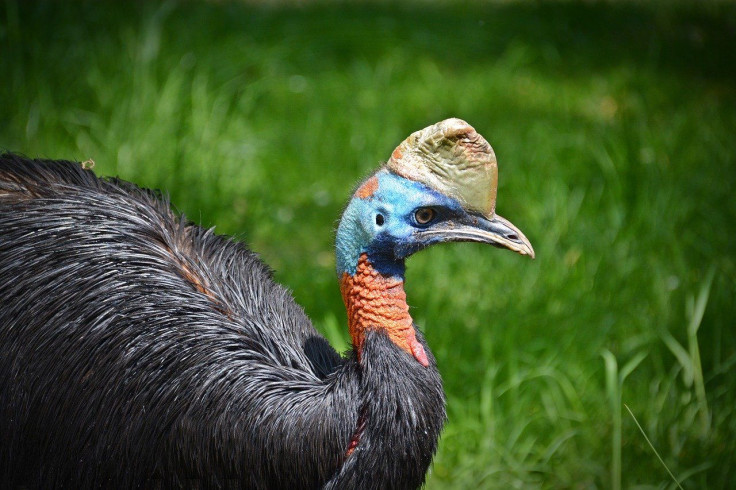Cassowary Gloss: Researchers Find How World's Most Dangerous Bird's Feathers Shine
KEY POINTS
- The cassowary is considered the most dangerous bird in the world
- They are also known for their distinctive look, with glossy black feathers and a blue head
- Researchers of a new study found what makes cassowary feathers glossy, which oddly, was not the same thing that makes their ancient cousins' feathers glossy
Why are cassowary feathers so shiny? The researchers of a new study found what makes the flightless birds' feathers shine.
Mammals, including humans, get their color mostly from pigments in hair and skin. In birds, their colors may also come from the physical structure of their feathers. Specifically, different shapes of the melanosomes, the part of the cells that produce pigment, affect how light bounces off the melanosomes, thereby presenting different colors and shine. This is why hummingbirds' throat feathers are iridescent and why crows appear glossy.
Typically, bird feathers are structured much like a tree, in that it has a long "trunk" in the middle called rachis and "branches" called barbs, which are covered in small structures called barbules. In some shiny birds, the gloss comes from the shape of the barbs and the melanosomes in the barbules.

However, this is the not the case with cassowaries, whose glossy black feathers may even look like hair from afar. Instead, according to the researchers of a new study, the shine comes from the thick rachis.
Because cassowary barbules are quite sparse, the gloss from the rachis gets more light exposure.
Cassowary cousins
The researchers also studied the feathers of cassowaries' ancient cousins. They found the ancient feathers had long melanosomes in the barbules, a characteristic that is often linked to iridescence in modern birds. This suggested the cassowary and its cousin from 52 million years ago evolved to have glossy feathers in different ways.
According to the researchers, it's possible the difference boils down to a specific deviation between the cousins: the ability to fly.
While modern cassowaries are flightless, their older cousins had the ability to do so. It's possible that because the ancient birds were flying, their priority was in being aerodynamic. However, since cassowaries no longer needed to fly, it gave them more room to evolve thick rachis.
"Needing to be able to fly is a very strong stabilizing force on wing shape," study co-author Chad Eliason said in a news release from Field Museum. "Losing that constraint, that need to fly, might result in new feather morphologies that produce gloss in a way that a flying bird might not."
Today, cassowaries are considered the most dangerous bird in the world because of their massive claws that can reach up to 4 inches in length and slice predators with a kick. Last year, a 75-year-old Florida man who owned about 100 exotic animals was killed by his cassowary after it attacked him.
Apart from their powerful kick, they are also known for their distinctive looks, with blue and turquoise heads, "helmets" over their heads and their massive build at over a meter tall. In fact, according to CNN, cassowaries have been described as looking like a "high-fashion dinosaur."
Although cassowaries are not considered globally threatened, according to the San Diego Zoo, all three cassowary species are suffering from a loss of habitat.
© Copyright IBTimes 2024. All rights reserved.






















